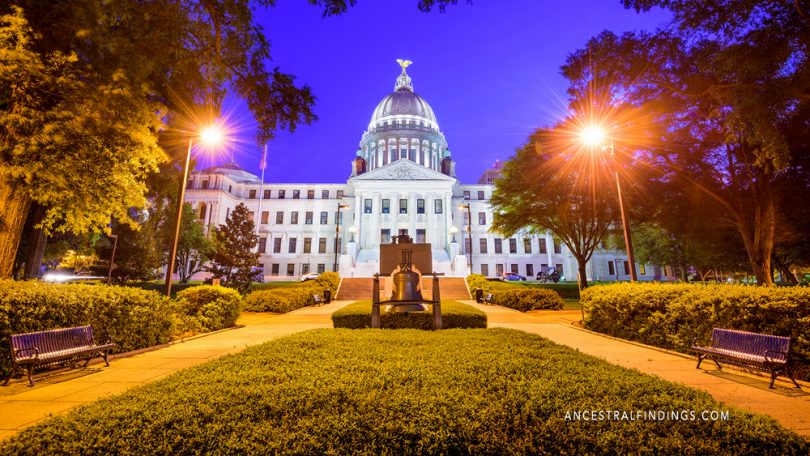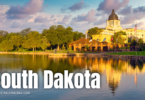Jackson is the state capital of Mississippi. While everyone calls it Jackson, its official name is the City of Jackson. It is the most populous city in Mississippi and is also one of the county seats of Hinds County (this county has dual county seats, with the other one being the town of Raymond). Small portions of the Jackson-Medgar Evers International Airport are located in neighboring Rankin and Madison counties. It has a population of about 160,000 people, which is down from the 173,514 people who lived there at the time of the 2010 census. Jackson is located along the Pearl River and is part of the larger Jackson Prairie area of Mississippi.
Jackson was founded in 1821, and intended from the start to be the capital of the new state of Mississippi. It is named after US Army General Andrew Jackson, who played an important role in the Battle of New Orleans during the War of 1812, before becoming President of the United States. Jackson played a role in the Civil War decades later, when, in 1863, the Battle of Vicksburg took place near there. This battle led to the Siege of Jackson, which was commanded on the Union side by General William Sherman, and Jackson was burned during the siege.

After recovering and rebuilding after the Civil War, Jackson became the most populous city in Mississippi, surpassing the former titleholder, the city of Meridian. The growth in the population in Jackson was largely because of the speculation of a boom in the natural gas industry in the city.
Today, Jackson is known as “The City with Soul,” which is also its official slogan. It is the anchor city for the Jackson Metropolitan area, which is the second largest metropolitan area in the state. Only the Memphis Metropolitan area is bigger, because there are four counties in Mississippi, plus the Memphis area of Tennessee, in that area. The Jackson Metropolitan area has about six hundred thousand people living in it.
Before the Europeans came to colonize it, the area that is now Jackson was the home of the Choctaw Native American tribe. The Choctaw tribe was actually more than a tribe. It was a nation, and it occupied a large territory in the southeastern part of North America, including the area that is now Jackson. The Choctaw nation itself was part of the even larger Muskogean culture that inhabited that area for thousands of years prior to the arrival of the Europeans. The Choctaw called the area that is now Jackson Chisha Foka.
The Jackson area was acquired by the United States in 1820 with the Treaty of Doak’s Stand. In this treaty, the United States took ownership of a large amount of land previously owned by the Choctaw. Once the treaty was in place, American settlers moved into the area. As they did so, they encroached on communal lands still owned by the Choctaw. This led to conflict between the Choctaw and the settlers.
One member of the Choctaw nation who was living in the area at the time of the signing of the treaty later described what this time in history was like for his people. He said:
“We have had our habitations torn down and burned, and our fences burned.” He also said that the Choctaw themselves faced a lot of personal abuse from the settlers, including having been, in his words, “scoured, manacled, and fettered.”
Because of the conflict between the Choctaw and the settlers, the US government put a lot of pressure on the Choctaw to move. They agreed to do so in 1830, signing several treaties that agreed to them leaving all of their lands that were east of the Mississippi River. Most of the Choctaw in Jackson did move after these treaties were signed, going with members of other Native American tribes to what is now Oklahoma, but some hardy and stubborn few remained. Those who stayed cited Article XIV of the Treaty of Dancing Rabbit Creek as their justification for doing so. In staying, they agreed to give up their tribal membership, and exchange it for citizenship in the United States.
Most of the Choctaw in modern-day Jackson are descendants of the group who stayed, and they have re-organized themselves into the Mississippi Band of Choctaw Indians, which is a federally recognized tribal nation.

The first known settler of European descent in the Jackson area was a French-Canadian trader named Louis LeFleur. He settled near the Natchez Trade Route along the Pearl River. Eventually, he established a small village called LeFleur’s Bluff. It became a trading post in the late 1700s and early 1800s. Using the trading post as a building point, soldiers who were going home from assignments in New Orleans built a public road connecting Lake Pontchartrain in Louisiana to the area of the trading post, which is near present-day Jackson. After the signing of the Doak’s Stand treaty, the area became a true town and not just a remote outpost.
When the Mississippi General Assembly decided the capital of the new state needed to be in a central location to the rest of the state, as opposed to Natchez, where it was then meeting, LeFleur’s Bluff was a natural choice. It was selected and renamed Jackson. It was slightly off-center of being the exact middle of the state, but, as that area was a swamp, it was the nearest settled location and made perfect sense.
The new city was planned in the checkerboard pattern popularized and promoted by Thomas Jefferson. This meant developed city blocks were alternated with public parks and other open spaces. Over time, most of the park areas have been developed to accommodate buildings, though a few green spaces are left there. The state legislature of Mississippi met in Jackson for the first time on December 23, 1822. It was there that, in 1839, the legislature passed the first law of any of the states to allow married women to own property in their own name and to control it themselves, rather than having their husbands do it for them.
After the first railroad was built there in 1840, connecting Jackson to other cities, and after the Civil War, Jackson flourished and became the vibrant city modern people know it to be.





